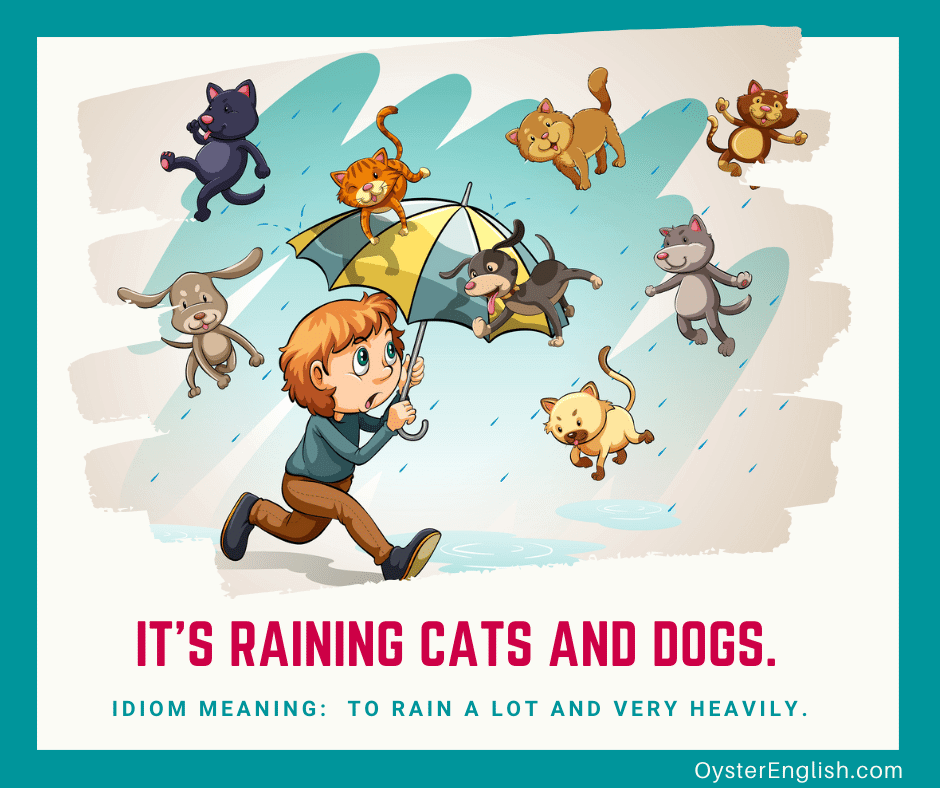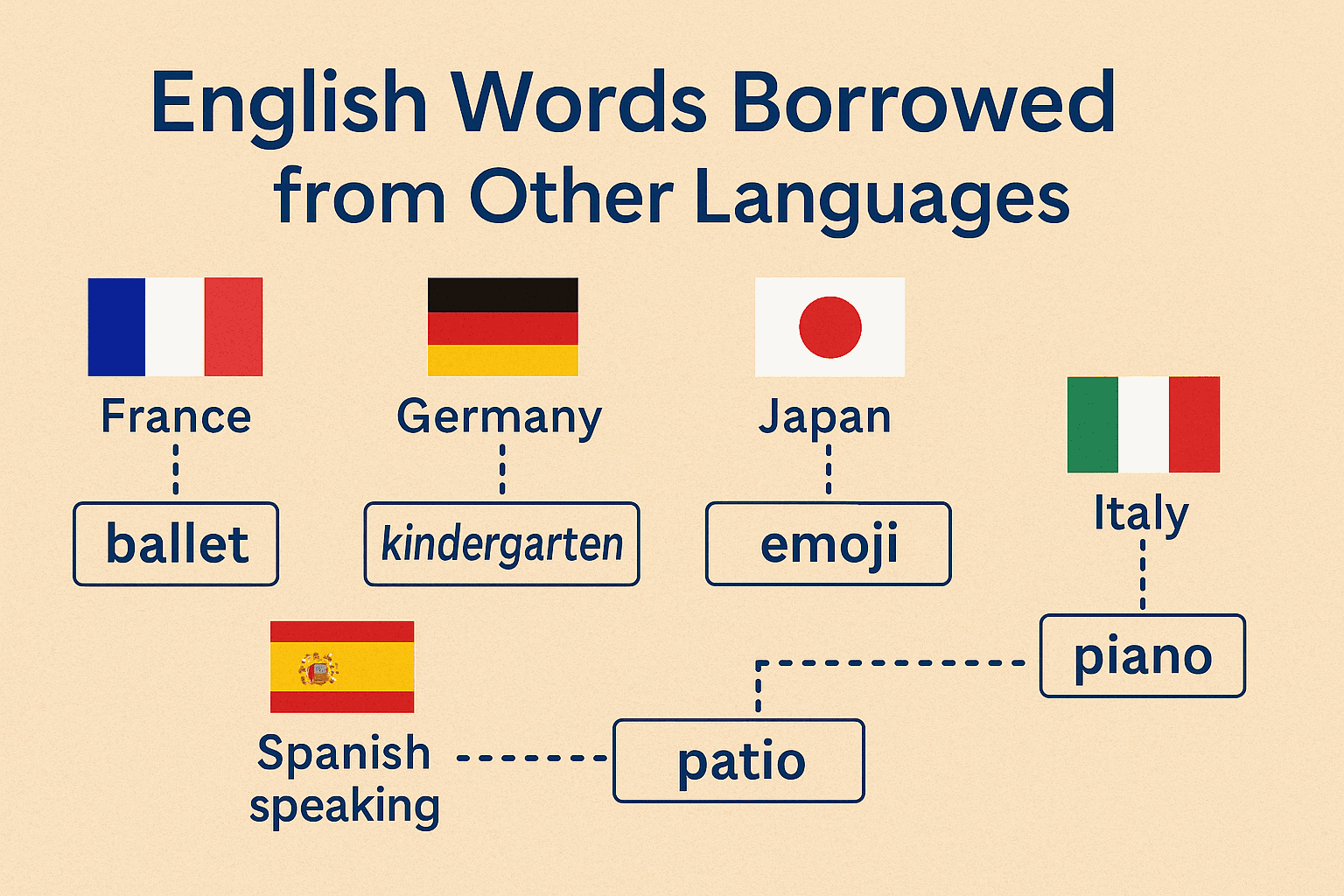The English idiom “it’s raining cats and dogs” is one of the most well-known—and oddest—ways to describe a heavy downpour. But have you ever wondered how other languages express the same idea?
Just like English, many languages use vivid, quirky imagery to describe intense rain. In this article, we’ll explore how cultures across the world talk about extreme weather and the fascinating idioms they use.
We’ll also provide real-world examples and reliable sources to help you deepen your understanding of idiomatic expressions.
What Does “It’s Raining Cats and Dogs” Mean?
In English, saying “it’s raining cats and dogs” means it’s raining very heavily, usually with wind and a torrential downpour. While the exact origin of this idiom is unclear, some believe it may have evolved from 17th-century England, when heavy rain could wash dead animals through the streets—a grim but memorable image.
Others suggest it’s a twist on the Greek phrase “cata doxa,” meaning “contrary to belief” or “unbelievable,” which could explain the absurdity of cats and dogs falling from the sky.
Either way, it’s clear that idioms often reflect culture, imagination, and humor.
👉 Want to know more? The Phrase Finder has an in-depth explanation.
How Other Languages Talk About Heavy Rain
Let’s take a global tour and see what people say when the skies open up!
1. 🇫🇷 French: Il pleut des cordes
Translation: It’s raining ropes.
In French, rain is so heavy that it looks like ropes of water falling from the sky. It’s visual, poetic, and much more elegant than cats and dogs!
📚 See it in context via Lawless French.
2. 🇩🇪 German: Es regnet Bindfäden
Translation: It’s raining twine or thick threads.
Like the French, Germans also describe the rain as threadlike or rope-like, which emphasizes volume and consistency.
3. 🇪🇸 Spanish: Está lloviendo a cántaros
Translation: It’s raining from pitchers or jugs.
Spanish speakers imagine huge containers of water being poured out of the sky. It’s a fantastic mental image that suggests volume and intensity.
4. 🇯🇵 Japanese: 土砂降り (Doshaburi)
Translation: Earth-and-sand downpour.
This term describes very heavy rain, often associated with flooding or mudslides. While it’s more descriptive than idiomatic, it shows how language reflects a country’s natural environment.
👉 See how it’s used at Tofugu.
5. 🇮🇹 Italian: Piove a catinelle
Translation: It’s raining buckets.
Similar to “it’s raining cats and dogs,” Italians imagine buckets of rain being dumped from the sky. The mental picture is amusing—and relatable!
6. 🇵🇹 Portuguese: Está chovendo canivetes
Translation: It’s raining pocket knives.
In Brazilian Portuguese, the expression becomes quite dramatic! The rain is so heavy and sharp, it’s like knives are falling—a phrase that may also imply danger or discomfort.
What These Idioms Reveal About Culture
Every idiom tells a story. The way people describe weather reflects their geography, history, and cultural values:
- Visual thinkers (like the French and Germans) use imagery like ropes and threads.
- Emotional cultures (like Italians and Spaniards) emphasize drama—buckets and jugs.
- Countries prone to natural disasters (like Japan) may have more literal terms.
These variations make language learning not just about grammar—but about understanding people.
Are Idioms Difficult to Translate?
Yes—and that’s what makes them fascinating.
Idioms don’t always have direct equivalents. Translating “it’s raining cats and dogs” word-for-word into another language might confuse native speakers.
Instead, translators often use culturally relevant substitutes. For example, an English-to-Spanish translation of “cats and dogs” would likely become “lloviendo a cántaros.”
👉 Learn more about this concept at FluentU’s guide to translating idioms.
Why Language Learners Should Study Idioms
Idioms are one of the best ways to:
- Understand culture
- Expand vocabulary
- Improve fluency
- Sound more natural in speech
They’re also a lot of fun to learn and use.
Practical Tip:
Use resources like WordReference Forums to see how idioms are used by native speakers in real-life situations.
Final Thoughts: A World of Rain, A World of Words
The idiom “it’s raining cats and dogs” may sound bizarre to some, but it’s just one way people across the world express a universal experience: getting soaked!
Whether it’s buckets in Italy, ropes in France, or pocket knives in Brazil, each culture has developed a vivid and memorable way to talk about the weather.
Next time the rain pours, try describing it the French, Japanese, or Spanish way. You’ll not only impress your friends—you’ll be celebrating the wonderful diversity of language.




